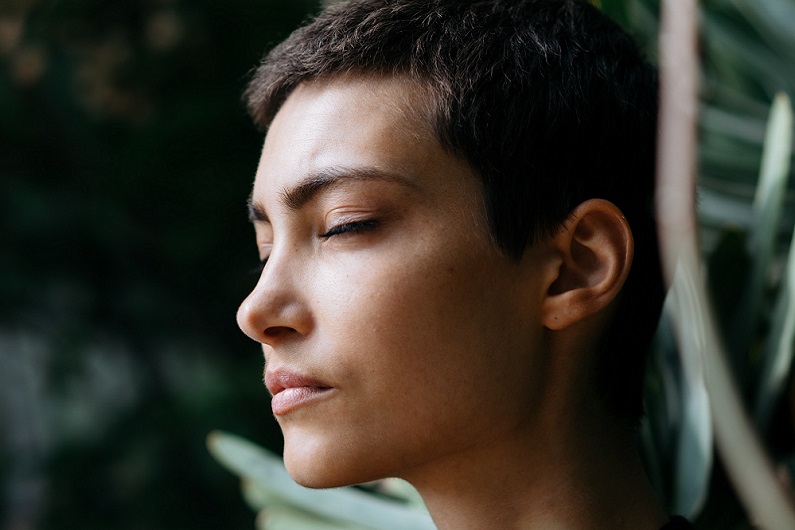Have you tried to use meditation for anxiety symptoms?
Many HSPs who are prone to anxiety turn to meditation to cope. It makes sense that people with sensitive nervous systems would gravitate toward a quiet, inward-oriented, and deeply personal practice.
We’ve also been hearing about endless benefits of meditation for years, one of which is that meditation can calm anxiety. There are indeed multifaceted benefits that can come from meditation practice, and anxiety relief may be one of those for some people.
Yet, lost in the hype that touts meditation as a cure-all is that it can have potential adverse side effects. Traditional teachers know this, but we don’t hear about it in a world in which traditions get commodified by the loudest voices and largest platforms.
A few years ago, researchers at Brown University published a study that looked at reported side effects by practitioners of a specific Buddhist meditation. These side effects included quite a few examples of nervous system hyperarousal or hypoarousal, such as anxiety, insomnia, emotional blunting, and dissociation.
Of course, this kind of study has limitations, but it also offers an important balance to a widespread narrative that overlooks the possible risks.
I’ll also say that as someone who has practiced various forms of meditation on and off for the last 23 years, I have experienced many benefits. And, I’ve also witnessed some of the rare, but real adverse side effects on loved ones and fellow practitioners.
I hope this serves as a reminder that if you ever experience increased anxiety or adverse side effects from your meditation, you’re not alone.
Today I want to shed some light on why meditation for anxiety may not always work for anxiety. I’ll also share tips for how you might approach meditation if you struggle with anxiety.
Why Meditation May Not Always Work for Anxiety
Meditation and mindfulness are considered “top-down” approaches, which means they engage the higher cognitive parts of the brain in the prefrontal cortex. This is the topmost, and evolutionary speaking, newest part of the brain that is home logic, language, thinking, and other executive functions.
Top-down approaches have value, but they are not always helpful in moments of hyperarousal. While there are complex interactions throughout the brain, anxiety is a response to stress that primarily takes place in the lower parts of the brain: the emotional center known as the limbic system, and the brain stem. When you’re in an anxious state, your emotional brain can take over while your cognitive brain goes offline.
This is why “bottom-up” approaches that work with these lower parts of the brain can be helpful for many people when dealing with anxiety. I’ll give examples of these approaches below.
If Meditation Isn’t Helping, Consider These Tips
First, if you’re struggling with debilitating anxiety or an anxiety disorder, please seek care from a licensed mental health clinician. Working one-on-one with a meditation teacher for guidance is also important, but meditation teachers are not trained mental health clinicians.
1) Meet your nervous system where it is. While you want to move from hyper-aroused to a calmer, regulated nervous system, meditative practice may not always be the starting point. Rather, you might save your meditation for after you’ve used other means to process anxiety since anxiety often needs a bottom-up approach to build a sense of safety in your nervous system. Examples of such approaches can include: exercise, dancing, yoga asana, expressive art, long exhales, chewing ice, jumping, shaking, nature walks, or other movements.
2) Meditate when you’re calm. Meditation starts out challenging for everyone. While consistent meditation can have benefits and potentially rewire your brain to be less reactive over time, it makes a difference to begin a practice from a calm or neutral state rather than from an anxious one. If you’re set on building a meditation practice, you might practice for 10 minutes per day when you already feel more regulated. By the way, this doesn’t have to be in the morning. You can integrate your practice into where it fits in your existing life.
3) Try a different form of meditation. Meditation practice takes time to build, so it’s a good idea to give your practice a chance for several months, unless it’s causing you distress. If you find it’s not helping, you might try another form of meditation. The study referenced above focused solely on Buddhist traditions and mindfulness practice. I’d be curious to know if Vedic practices such as mantra recitation or an Internal Family Systems approach to meditation would carry the same possible risks.
4) Explore alternatives to meditation. Meditation can challenge you, but it should not be a burden, stoke anxiety, or result in undue distress. There’s nothing wrong with you if you’re not experiencing anxiety relief or other benefits from meditation. There are other practices that can be grounding and help you release anxiety. They may even help you connect more to the world. Some are mentioned in #1, but this could also include practices such as journal writing or mindful gardening.
In Closing…
Keep in mind that it’s not necessary to stick with a meditation practice for years in hopes of reaching some eventual immeasurable state. Your practice should have functional benefits that support nervous system regulation and help you better integrate with all parts of yourself, loved ones, and the surrounding world.


Seeking Meaningful Travel Without the Overwhelm?
Success! Look for my welcome email in your inbox. If you don't see it, check your SPAM!